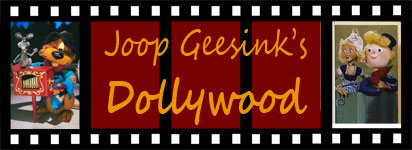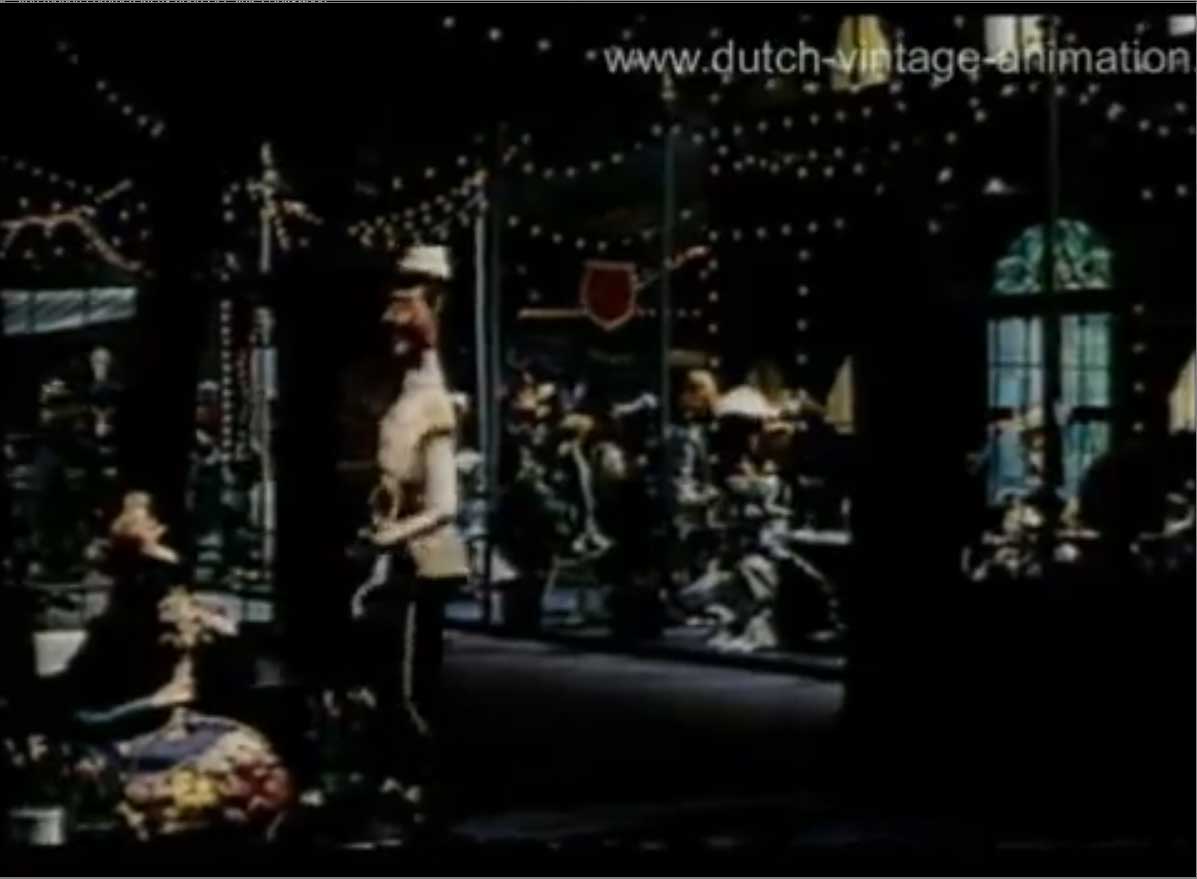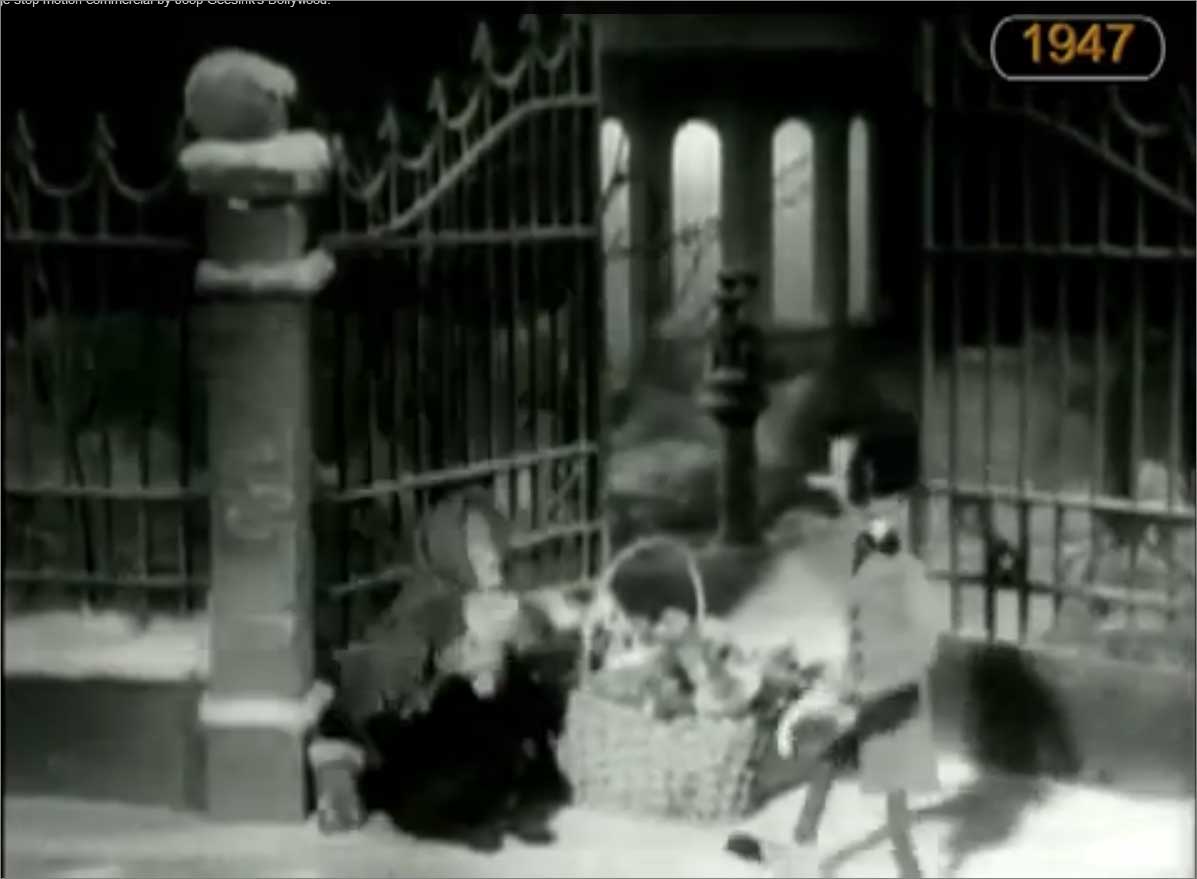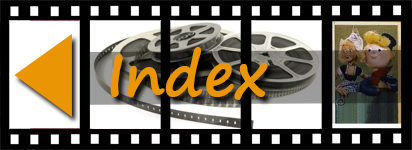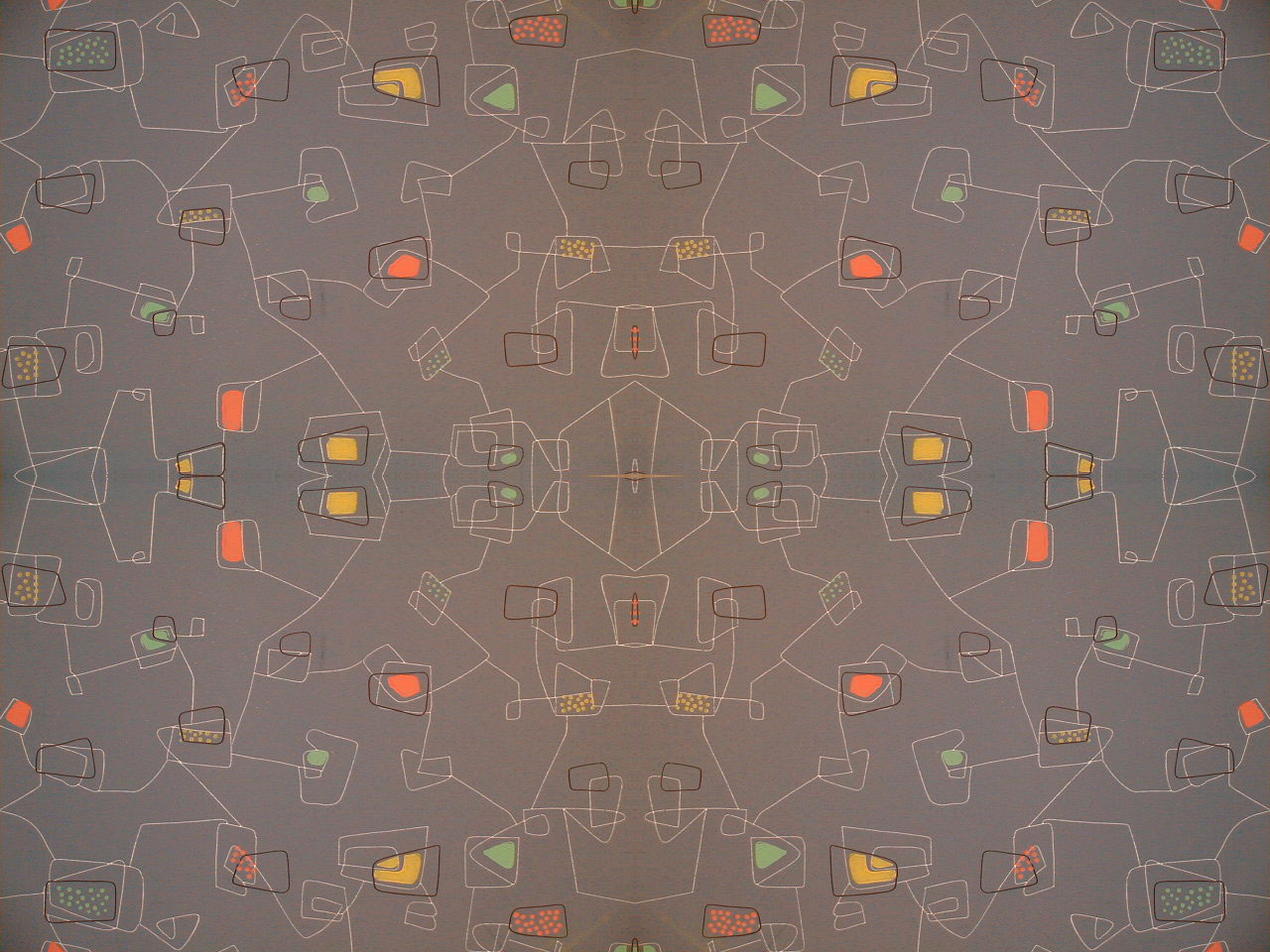
75 Years of Music
In 1966 electronics company PHILIPS celebrated its 75th anniversary. This was to be celebrated in a grand style. For many decades the company, still firmly anchored in the Netherlands (Eindhoven), had had excellent connections with Joop Geesink. During a time when Dollywood was in an economic downturn, the studio delivered this gem of a puppet film. It can be considered as 'state of art' for the puppet film of that era.
Remarkable
The design of the tall, elegant puppets doesn't resemble much the often corny puppets from other productions. Max Keuris, proving his versatility here, was responsible for this. For comparison, see the designs he used in "On Parade" (1964).
The film rapidly zips through time and music styles. Numerous music legends or caricatures of them pass us by: Paul Whiteman in front of an orchestra performing "Rhapsody in Blue". Fred Astaire as a tap dancer.Al Jolson (the Jazz Singer, in black & white), Louis Armstrong, the Rolling Stones, Arthur Rubinstein, Betty Boop and many others.
André Popp
A familiar name that comes across in this mega-production is that of André Popp. This belongs to the composer who previously gained much fame with the sound track of Piccolo, Saxo en Co. (1958)

Trivia
Cor Icke was considered as one of the top animators of that time.
For complex scenes in some films the lead animator would have one or more assistants. However, this film is entirely animated by just one man, Cor Icke. Note the opening scene in which the camera travels along a carnival scene: there are cancan dancers, a juggler spinning plates on sticks, a vaudeville comedian doing a jig. There's too much to take it all in. Remember that everything was recorded directly on film, and video assist did not exist yet. The animator knew his puppets as if they were his own "children." He knew exactly who was doing what at any given point in time.
This opening scene possibly includes a tribute to one of Geesink's first puppet films, "The Broken Heart" (1947). It has a similar wrought-iron gate, an eye-catching historic bicycle, the flower lady, but no carnival.
From Art to Kitsch
Originally the film had a different ending. It also starts with Arthur Rubinstein playing the piano, but then it changes: the camera pulls back to glide through the auditorium which is filled with the many characters who were featured earlier in the film. We glide over and past them, out of the auditorium through wide open garden windows; there we find the cab driver back on his buggy with the white horse. High in the air fireworks explode brightly. The cabby looks up and sees the catchphrase we have now. Beautiful and cinematic. However the client, Philips, found that the film had to display their products more prominently and proposed to re-shoot the ending. That is the version we have now. The press corps had their own opinions about this.
Autographed records
After seeing the film during a visit to the studio, the agent of pianist Arthur Rubinstein's (who was under contract with the Philips record label) inquired who had made Arthur's likeness. Puppet maker Harry Tolsma introduced himself. In response, Tolsma received a number of autographed records as a token of the concert pianist's appreciation.
Credits
| Title: | Philips Cavalcade - 75 Years of Music | |
|---|---|---|
| Client | Philips | |
| Duration: | 10 minutes | |
| Year of production: | 1966 | |
| Art Director: | Max Keuris | |
| Music: | André Popp | |
| Animator: | Cor Icke | |
| Puppets: | Harry Tolsma | |
| Camera: | Hans Kuiper | |
| Special effects (fireworks): | Per Lygum | |
| Format: | 35 mm, Technicolor |
